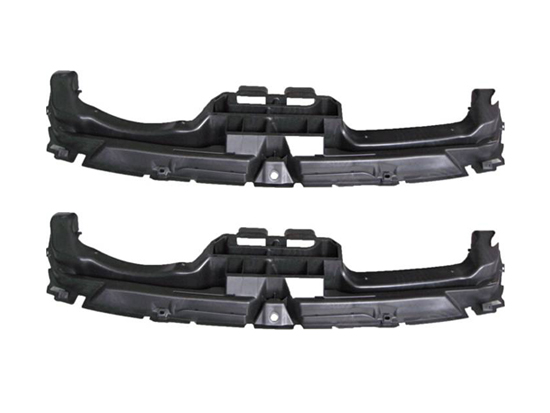

For the plastic parts of automobile bumpers, there are […]
For the plastic parts of automobile bumpers, there are generally two types of external and internal types. For all large-area reverse bumps on both sides of the car bumper, either external or internal splitting can be used. The choice of these two classification methods mainly depends on the requirements of the end customer's automobile OEM on the bumper. Generally, European and American cars mostly use internal classification technology, and Japanese cars mostly use external classification. There are advantages and disadvantages of the two classification methods. The outer type of bumper needs to deal with the clamping line, which increases the processing procedures. However, the mold cost and technical difficulty of the outer type of bumper are lower than the inner type of bumper. There are 7 side holes on the outer side of the front bumper, and the fixed-elastic spring structure is used in the mold. Advanced internal parting surface technology is used in the mold design.
The so-called inner parting technology is relative to the outer parting. Generally, the general product is the parting line of the fixed moving mold according to the maximum projection contour of the product. This is the outer parting. The general mold is based on this Classification method. The internally divided bumper adopts the secondary track changing control technology to perfectly inject the bumper at one time, thereby ensuring the appearance quality of the bumper and saving the processing procedures and processing costs of plastic parts. But the disadvantage is that the cost of the mold is high, and the technical requirements of the mold are high.

Internal parting is to hide the parting line on the non-appearance side of the product (ie, B side or C side, the appearance side is A side), and the parting line will not be seen after assembly on the vehicle, so it will not affect Exterior. In order to achieve this function, the lateral inclined roof (or straight roof) is controlled to run on the secondary rail by the rail technology on the mold structure, thereby ensuring the deformation of the plastic parts from the mold, using this secondary rail technology The control mechanism is called internal parting technology. In the design of automotive injection molds, internal parting technology is specifically designed for automotive bumpers. However, this technology is more difficult and structurally more complicated than the external split bumper, and the technical risk is also higher. The mold cost and mold price will be much higher than the external split bumper. Is widely used. The injection mold of the front bumper body of the car adopts the internal parting surface technology, passes through the hot runner, and is controlled by the sequence valve to enter the glue. The reverse buckle on both sides adopts the structure of a large sloping top cover with a horizontal sloping top and a straight top. Due to the large size of the straight top and the sloping top, the slanting top rod and the straight top rod are 50-60mm, and the horizontal slanting top rod is 25-35mm. The ejection angle of the large inclined top is 16 degrees. For the ejection angle greater than 12 degrees, the guide rod structure must be designed. Therefore, the guide rod structure is designed for the large inclined top of this mold.

Taizhou Tengfei Mould Factory is located in Huangyan Mould Industrial Park, Taizhou City, Zhejiang Province, China. As a China plastic mould manufacturers and automobile mould factory, It is adjacent to the Yangtze River Delta Economic Zone and is close to Taizhou Bay Container Terminal, Luqiao Airport and Hangzhou-Ningbo Expressway. The traffic is very convenient and fast.
